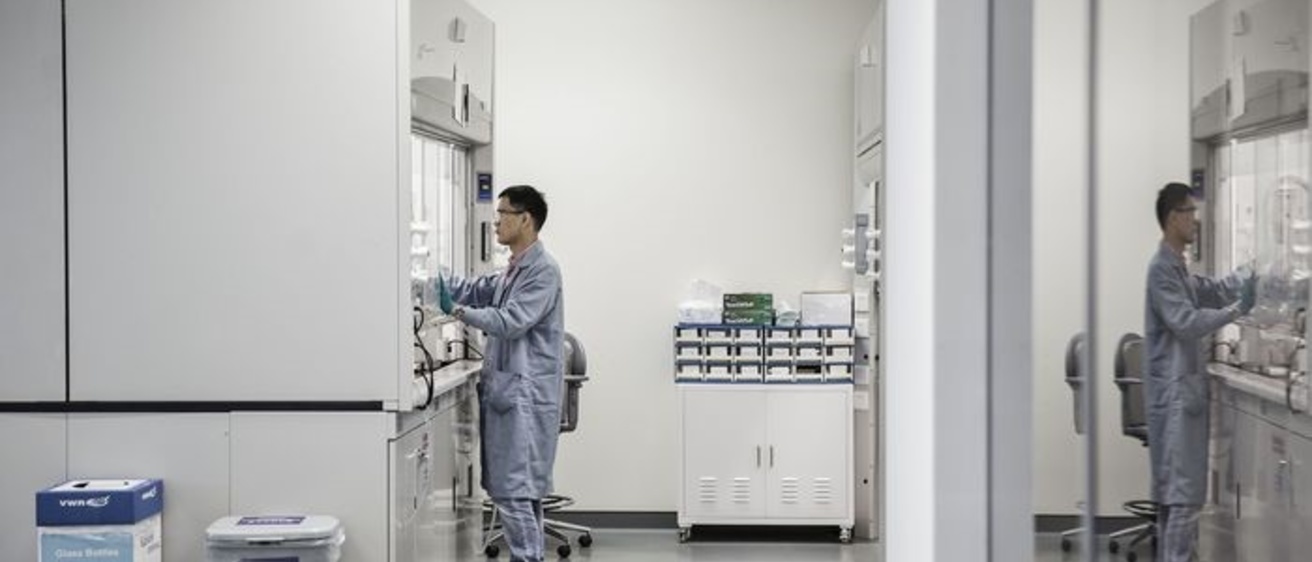Pharmaceutical companies are spending billions of dollars to develop drugs that can target cancer like guided missiles.
Therapies known as antibody-drug conjugates, which help deliver chemotherapy directly to tumors, have gotten most of the attention and are farthest along:
Pfizer’s PFE 1.55%increase; green up pointing triangle $43 billion acquisition of biotech Seagen Inc. last year underscored how hot the field has become.
More quietly, a concept known as radiopharmaceuticals is also gaining ground. In recent months, interest in this space has led to a rise in dealmaking. The idea is similar to ADCs in that a patient receives an old treatment—in this case, a radioactive particle instead of chemotherapy drugs—but it is bound with a molecule that can chase down tumor cells. The technology is at a more nascent stage, but a steady growth of venture capital money and acquisitions by large pharmaceutical companies means this could well become a key part of the fight against cancer in the next decade or so.
Radiation has long been a mainstay of cancer treatment, with more than half of patients receiving some form of it. A typical course involves using machines to send high-energy beams of radiation that can penetrate deep inside the body to kill cancer cells. The downsides of external radiation are that it can affect surrounding healthy tissues and is limited to more localized cancers.
Drug companies have been tinkering with radiotherapy for a long time, but the field has struggled commercially. Interest grew when Swiss pharmaceutical company
Novartis NOVN 0.38%increase; green up pointing triangle made a pair of multibillion-dollar acquisitions starting in 2017. Pluvicto, a therapy Novartis got in one of those acquisitions, was approved by the Food and Drug Administration in 2022 for a type of advanced prostate cancer, and last year brought in $980 million in sales. Analysts polled by Visible Alpha expect it to reach $3 billion in sales by 2027.
Novartis’s success, and the growing interest in precision therapies, has spurred competitors to take a closer look at the technology. Late last year,
Eli Lilly LLY -2.04%decrease; red down pointing triangle acquired Point Biopharma for $1.4 billion and Bristol-Myers Squibb BMY 1.37%increase; green up pointing triangle agreed in December to buy RayzeBio for $4.1 billion, just months after the startup went public. Notably, RayzeBio’s proxy statement showed that two other companies made significant offers. That bodes well for other biotechs in the arena and explains why shares of Fusion Pharmaceuticals FUSN -3.49%decrease; red down pointing triangle and Perspective Therapeutics CATX 7.55%increase; green up pointing triangle have soared in recent months.
The biggest challenge in radiopharma is its supply chain. Radioactive isotopes are produced in special nuclear reactors or generators and then shipped to a production facility where they are linked to a cell-targeting compound. The product then needs to be tested and packaged before being shipped to clinics. Speed and precision are extremely important because the radioactive material in the medicine decays within days.
Due to the complexities of the supply chain, the recent Eli Lilly and Bristol deals were partly focused on gaining access to manufacturing capacity and access to isotopes, which are limited in supply, said Zhiqiang Shu, a biotech analyst at Laurion Capital Management. He said that while Novartis’s currently approved drugs use beta-emitting isotopes, the next wave of radiopharma innovation is likely focused on alpha-emitting isotopes, which are more concentrated and therefore ideal for targeted therapies.
Manufacturing constraints led to supply shortages of Novartis’s Pluvicto last year but Victor Bulto, president of the U.S. unit at the company, says that with new facilities now online the company should have enough capacity to produce 250,000 doses this year, which is more than enough to meet patient demand.
One promising aspect is that this approach acts not just as a therapy, but also as a diagnostic. A product similar to the drug is infused into the body and emits a form of energy that can be detected by scanners, allowing doctors to see the cancer in the body.
“If we use the military analogy, you can have a very granular intelligence of where the bad guys are,” Bulto said. “That’s very important because patients usually have metastasis in other parts of the body that may go untreated.” Bulto says another key advantage is that, unlike biologics like ADCs, the drug is eliminated quickly through urine, which could potentially lead to a better side effect profile for patients.
Radiopharmaceuticals and ADCs are both part of a broader arsenal of cancer drugs that could be used in combination to improve patient outcomes. Puja Sapra, head of Biologics Engineering & Oncology Targeted Delivery at AstraZeneca, an ADC leader that is also developing radiopharmaceuticals with Fusion, says much of the science that has helped advance ADC capabilities is being deployed to develop radiopharmaceuticals. Down the line, she said, “The hope is that patients will be treated with an antibody-drug conjugate or a radio conjugate or combinations of these therapies instead of chemo or external beam radiation.”
We aren’t there yet, and it will take many years and billions of dollars of studies to figure out the true potential of these therapies. But pharma’s interest in targeting cancer more precisely isn’t likely to abate.
Write to David Wainer at david.wainer@wsj.com
Copyright ©2024 Dow Jones & Company, Inc. All Rights Reserved. 87990cbe856818d5eddac44c7b1cdeb8
Appeared in the February 21, 2024, print edition as 'Drug Firms Go Nuclear To Fight Cancer'.
